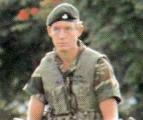Chapter 1 makes the following changes:
• Replaces the steps of IPB from FM 34-130 with the following steps:
�� Define the Operational Environment/Battlespace Environment.
�� Describe the Environmental Effects on Operations/Describe the Battlespace Effects.
�� Evaluate the Threat/Adversary.
�� Determine Threat/Adversary Courses of Action.
• Redefines IPB as it applies to Army forces.
• Discusses the operational environment/battlespace environment and lists the variables used to
describe the operational environment/battlespace environment.
• Uses the mission variables—mission, enemy, terrain and weather, troops and support available,
time available, and civil considerations (METT-TC)—and mission, enemy, terrain and weather,
troops and support available, time available (METT-T) as the framework for IPB.
• Introduces the memory aid “areas, structures, capabilities, organizations, people, and events
(ASCOPE)” for civil considerations.
• Replaces “order of battle” with “threat characteristics” in Army doctrine. The Marine Corps
retains the term “order of battle.”
• Replaces “battlefield operating system” with “warfighting function.”
• Replaces “battlespace” with “operational environment, area of operations,” or “area of influence,”
depending on the context, in Army doctrine. The Marine Corps retains the term “battlespace.”
Chapter 2 makes the following changes to step 1 of the IPB process:
• Replaces the substeps of step 1 with the following:
�� Identify Significant Characteristics of the Environment.
�� Identify the Limits of the Command’s Area of Operations.
�� Establish the Limits of the Area of Influence and the Area of Interest.
�� Evaluate Existing Databases and Identify Intelligence Gaps.
�� Initiate Collection of Information Required to Complete in accordance with IPB.
• Discusses area of operations, area of influence, area of interest, and unassigned areas in line
with FM 3-0.
Chapter 3 makes the following changes to step 2 of the IPB process:
• Replaces the memory aid for the military aspects of terrain acronym “OCOKA” with
“OAKOC”—observation and fields of fire, avenues of approach, key terrain, obstacles,
concealment and cover in Army doctrine. The Marine Corps retains the memory aid KOCOA—
key terrain, observation and fields of fire, cover and concealment, obstacles, and avenues of
approach.
• Places increased emphasis on studying civil consideration (using the memory aid ASCOPE—
areas, structures, capabilities, organizations, people, and events).
Chapter 4 makes the following change to step 3 of the IPB process: replaces “doctrinal templates” with “threat/adversary templates.”
Chapter 5 makes the following change to step 4 of the IPB process: changes the definition of “situation template.”
Chapter 6 aligns offensive and defensive operations discussions with FM 3-0.
Chapter 7 aligns the discussion on stability operations and civil support operations with FM 3-0 and emerging stability operations and civil support operations doctrine.









Bookmarks